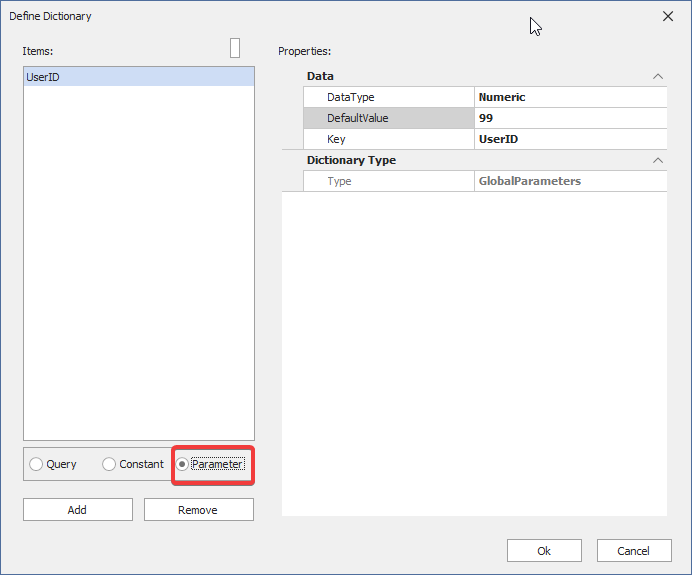Parameters
Introduction
Parameters within the dReveal model serve as a crucial communication bridge between the hosting application and the dReveal engine. This documentation will provide insights into the role and usage of parameters in your dReveal reports.
Parameters are dynamic values that are provided by the web client during execution. Examples of these values may include UserID, RoleID, Language, or any other information that the application requires at runtime.
These parameters are primarily designed for use with the 'Embedded OEM' dReveal web product. Through seamless integration, the hosting application gains the flexibility to determine which values will be supplied during execution.
Parameter Definitions
When you create a model and define a dR View, you may encounter scenarios where the value of a parameter is not known in advance. In such cases, you can create a parameter definition to accommodate this uncertainty. While creating the definition, you can provide a sample or placeholder value for testing and development purposes.
Adding Parameters
To add parameters, follow these steps:
-
Access the Dictionary Icon: Navigate to the ribbon and select the dictionary icon.
-
Choose Parameter Option: Instead of selecting SQL, check the 'parameter' option.
-
Define Parameter Properties: Parameters have specific properties, including data type, default value, and a name. Configure these properties to tailor the parameter to your specific needs.


Utilizing Parameters
Parameters are versatile and can be employed in various aspects of your dReveal model, enhancing its functionality and flexibility. Here are three key areas where parameters come into play:
-
Virtual Fields: Leverage parameters within virtual fields to perform dynamic calculations and data manipulations tailored to the specific needs of your reports.
-
Relationships: Establish relationships between data elements using parameters, allowing for dynamic connections between different parts of your model.
-
Conditions: Enhance report filtering capabilities by utilizing parameters within conditions, enabling dynamic and context-aware filtering.
Conclusion
Parameters play a pivotal role in enhancing the interactivity and flexibility of your dReveal reports. By facilitating dynamic input from web clients, they empower your reports to adapt to various scenarios, making them more versatile and valuable to end-users.
Incorporate parameters into your dReveal models to create reports that not only provide insights but also respond dynamically to user needs at execution time. This flexibility can greatly enhance the usability and effectiveness of your dReveal-powered applications.
